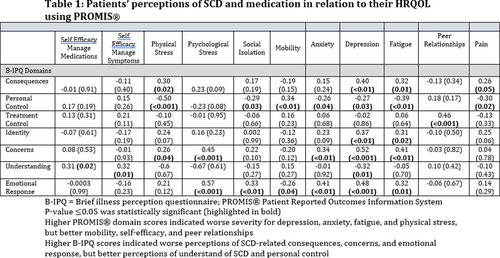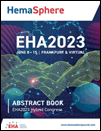P1446: HYDROXYUREA AND LIMB ULCERS: IS IT WORTH SUSPENDING? RETROSPECTIVE COHORT STUDY OF BRAZILIAN ADULT PATIENTS WITH SICKLE CELL DISEASE
Abstract Topic: 26. Sickle cell disease
Background: Limb ulcers are one of the most debilitating complications of Sickle Cell Diseases (SCD), greatly limiting the quality of life of these patients. Although Hydroxyurea (HU) is a fundamental element in the management of patients with SCD, its role of in the emergence or worsening of limb ulcers in SCD patients is still a matter of debate.
Aims: This study aimed to assess the evolution of malleolar ulcers in these patients and seek possible associations of these outcomes with the use of HU.
Methods: A retrospective analysis was performed of the medical records of 33 adult patients with SCD and identified as having ulcers in the lower limbs, treated at the UNICAMP Blood Center between 2000 and 2020. Their data were compiled regarding demographic characteristics, genotype, number and size of lesions, duration and outcome (complete healing/regression or maintenance/increase of the lesion at the time of the study), as well as the use of HU and dose.
Results: Of the 33 patients, 29 (88%) were HbSS, 3 (9%) HbSC and 1 (3%) sickle cell/beta0-thalassemia being 15 (45.5%) women and 18 (54.5%) men; the mean age at the onset of the lesions was 40 (14-70) and 33 (19-51) years, respectively, with a mean time of evolution of 58 (1-240) months. Thirteen patients (40%) had more than 1 lesion simultaneously and 11 (33%) had bilateral involvement. During the period evaluated, 22 (67%) had a completely healed ulcer; 3 (9%) decrease in size; in 5 (15%) there was no change and in 3 (9%) there was an increase in size. 16 patients (48%) reported pain; 14 (42%) had some episode of infection and antibiotics were used by 20 patients (61%). The main treatment prescribed was dressing with healing agents (73%); 16 patients (48%) were using HU at the time the ulcer appeared. Comparing the 2 groups regarding the use of HU, there was no significant difference in: i) duration of lesions (with HU: median duration of 75 months (5-188), without HU: 38 (2-240), p=0.87, Mann-Whitney test), ii) outcome: improvement/complete healing or increase (p=0.68, Fisher’s Exact Test) or iii) average weekly dose (with improvement of lesions: 7.3g/week (5- 8.5) x no improvement: 7.81 (4.5-12.25), p=0.96, Mann-Whitney test). Of the 16 patients initially using HU, 7 (43.75%) had the drug discontinued by the assistant physician at the time the ulcer appeared, 6 (37.5%) had the dose maintained and 3 (18.75%) had increased dose due to other complications that justified the conduct. In addition, 8 patients initially without HU had its use indicated despite the occurrence of ulcer. Comparing the 7 patients who had their use of HU interrupted in relation to those who had their dose increased or started using it despite ulcers (n=11), there was no difference in terms of healing/decrease versus increase in lesions (p=0.59, Fisher’s exact test).
Summary/Conclusion: We observed that the use of HU was not associated with a greater chance of worsening of malleolar ulcers. On the other hand, we speculate that discontinuation of the drug would tend to lead to an increase in the incidence of vaso-occlusive crises, which could consequently result in the recrudescence of the lesions. Therefore, the presence or emergence of ulcers should not be a limiting factor for the use of HU, since many patients do not experience worsening of the lesions after its introduction. This paradigm shift led our center to reconsider the suspension of Hydroxyurea in patients with malleolar ulcers, believing that the beneficial effect of the drug is greater than the possible negative impact on their emergence or maintenance.
Keywords: Hydroxyurea, Sickle cell disease





